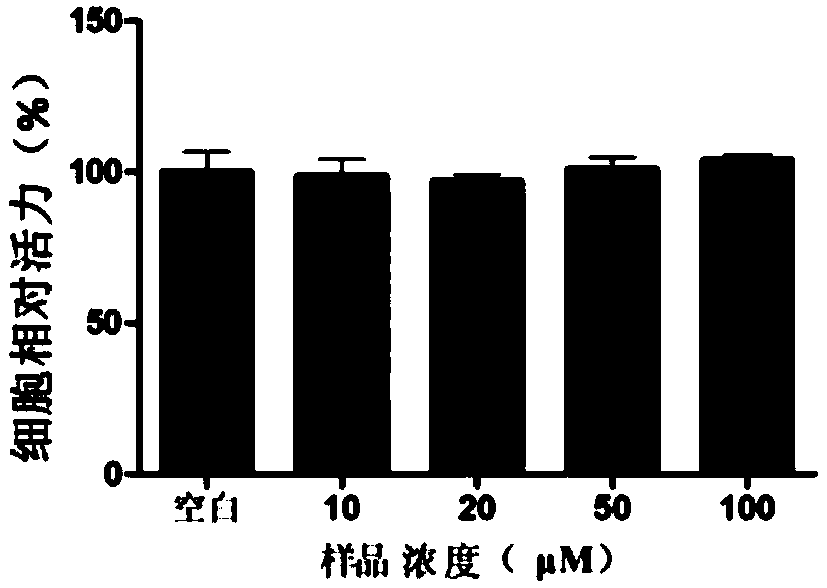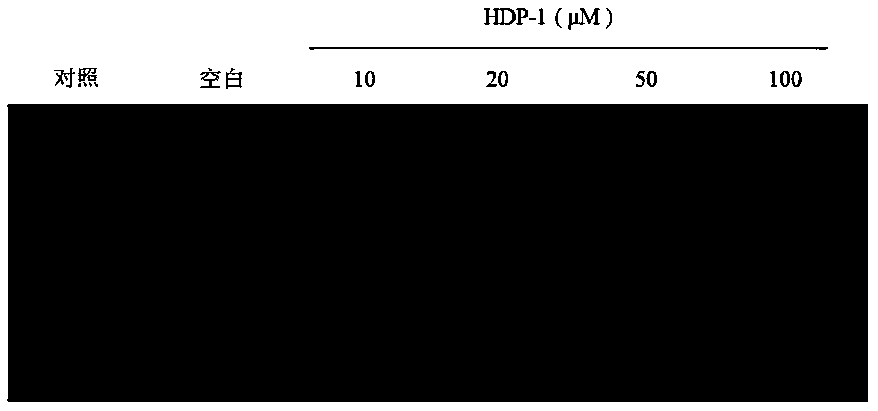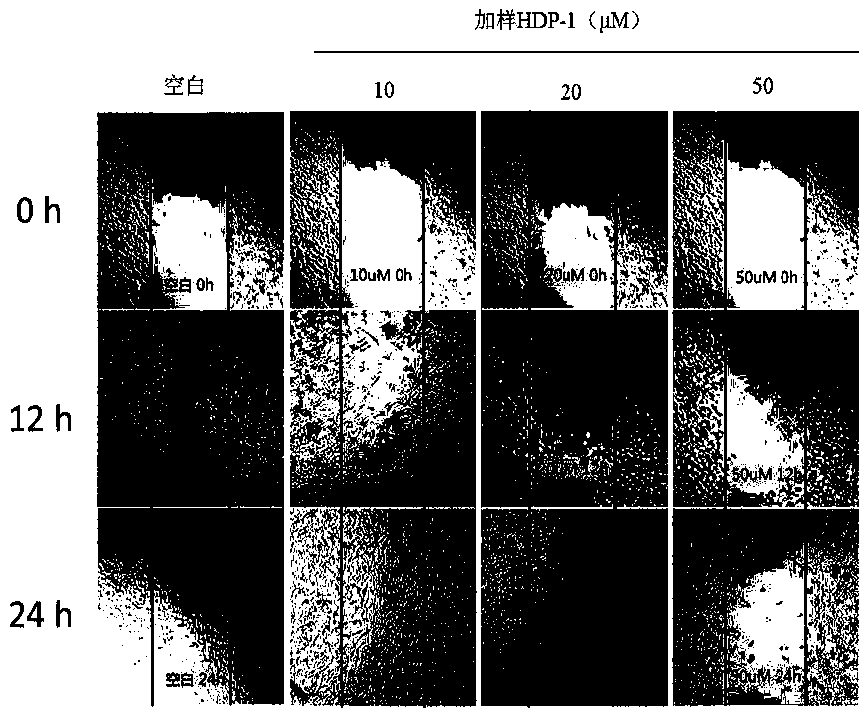Application of polypeptide HDP-1 of Haliotis discus hannai to preparation of drugs used for preventing and treating tumors and diseases related to oxidation
A technology of HDP-1 and wrinkle plate abalone, applied in the field of peptides, can solve problems such as oxidative damage of cells, tissues or organs, instability of free radicals, etc.
- Summary
- Abstract
- Description
- Claims
- Application Information
AI Technical Summary
Problems solved by technology
Method used
Image
Examples
Embodiment 1
[0028] Example 1: HDP-1 free radical scavenging activity
[0029] Biological oxidation has an inseparable relationship with free radicals and reactive oxygen species. 1,1-Diphenyl-2-trinitrophenylhydrazine (DPPH) has the characteristics of stable properties and easy control of the reaction, and is usually used as the first choice reagent for the determination of antioxidant free radical scavenging ability in vitro. Among active oxygen species, superoxide Anion radicals (O 2- ), hydroxyl radicals (·OH), hydrogen peroxide (H 2 o 2 ) has a certain representativeness and is a commonly used experimental object in antioxidant research. Therefore, this experiment detects the in vitro scavenging ability of HDP-1 on DPPH free radicals, superoxide anion free radicals, hydroxyl free radicals and peroxyl free radicals. In order to better evaluate the free radical scavenging ability of HDP-1, in addition to in vitro experiments, this study also carried out the measurement of HDP-1's in...
Embodiment 2
[0043] Example 2: Cytotoxic effect of HDP-1 on HT1080 cells
[0044] Determination of Cytotoxicity by MTT Assay
[0045] Take out the HT1080 cells from the incubator and digest them with an appropriate amount of trypsin. After the cells have detached from the wall, add complete medium, blow and blow to make the cells evenly dispersed, inoculate them into 96-well plates at a volume of 100 μL per well, and place them in a carbon dioxide incubator. Incubate for 24 hours. The original medium was aspirated, replaced with fresh medium, and HDP-1 samples were added respectively so that the final concentrations of the samples were 0, 10, 20, 50, and 100 μM (there were 3 parallel groups for the same concentration), and incubated for 24 hours. Aspirate the medium, add 100 μL of 5 mg / mL MTT to each well, and incubate for 4 hours. Aspirate the MTT, add 100 μL DMSO to each well to dissolve the crystals, measure the absorbance value with a microplate reader at a wavelength of 570 nm, and ...
Embodiment 3
[0047] Example 3: Protective effect of HDP-1 on DNA
[0048] 3.1 DNA extraction
[0049] Several flasks of HT1080 cells (obtained from Example 2) were taken and digested with trypsin. After the cells were detached, an appropriate amount of medium was added, transferred to a centrifuge tube, and centrifuged at 1000 rpm for 10 min in a centrifuge. Remove the supernatant, wash with PBS, add 10 mL of PBS containing 5 mM EDTA, and centrifuge at 1000 rpm for 10 min. Remove the supernatant, add 350 μL 0.2M sodium acetate, 25 μL 10% SDS, 10 μL proteinase K and 10 μL 0.5 mg / mL RNase, mix thoroughly, and after standing at 54 °C for 1 hour, add phenol at a ratio of 1:1: Chloroform: isoamyl alcohol (25:24:1) solution, centrifuged at 12000 rpm for 10 min. The supernatant was mixed with 100% cold ethanol at a ratio of 1:1.5, and centrifuged at 12000 rpm for 5 min to remove ethanol. After the precipitate was fully dried, it was dissolved in TE buffer and stored at low temperature.
[005...
PUM
 Login to View More
Login to View More Abstract
Description
Claims
Application Information
 Login to View More
Login to View More - R&D
- Intellectual Property
- Life Sciences
- Materials
- Tech Scout
- Unparalleled Data Quality
- Higher Quality Content
- 60% Fewer Hallucinations
Browse by: Latest US Patents, China's latest patents, Technical Efficacy Thesaurus, Application Domain, Technology Topic, Popular Technical Reports.
© 2025 PatSnap. All rights reserved.Legal|Privacy policy|Modern Slavery Act Transparency Statement|Sitemap|About US| Contact US: help@patsnap.com



